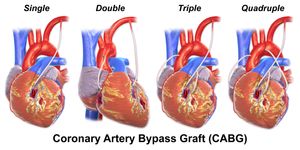Using non-invasive Magnetic Resonance Imaging (MRI), Boston University School of Medicine (BUSM) scientists have found a way to better detect precarious atherosclerotic plaques before dangerous clotting or rupture occurs.
In cases of atherosclerosis, plaque builds up inside arteries and can inhibit blood flow to the heart, decreasing the amount of needed oxygen the heart can receive (
National Heart, Lung and Blood Institute). This condition is a common form of cardiovascular disease. In 2010, over 788,000 people died from cardiovascular complications (
NHLBI).
This study made distinguishing between “stable” and “vulnerable” possible, an achievement applauded for its non-invasiveness and its potential toward furthering atherosclerosis treatment options. As it is for most diseases, complications from atherosclerosis are best preventing by identifying particularly dangerous plaques as soon as possible. Their results were published in the journal
Atherosclerosis.
To perfect their analysis of atherosclerosis plaques through MRI, BUSM scientists compared their MRI observations and analyses to the results from actual plaque tests for stability. After a series of criteria for measuring plaque stability was established, the team was able to make significant observations about the differences between stable plaques and vulnerable plaques.
Stable plaques exhibited no features of vulnerability at any time, whereas vulnerable plaques showed a progression of vulnerable features, especially in the last month," described James Hamilton, PhD, and corresponding author of the study.
This new use of technology is anticipated to simplify some of the complexities surrounding atherosclerosis clinical treatment and diagnosis.
Check out the following video to learn more about how atherosclerosis develops:
Source:
EurekAlert









